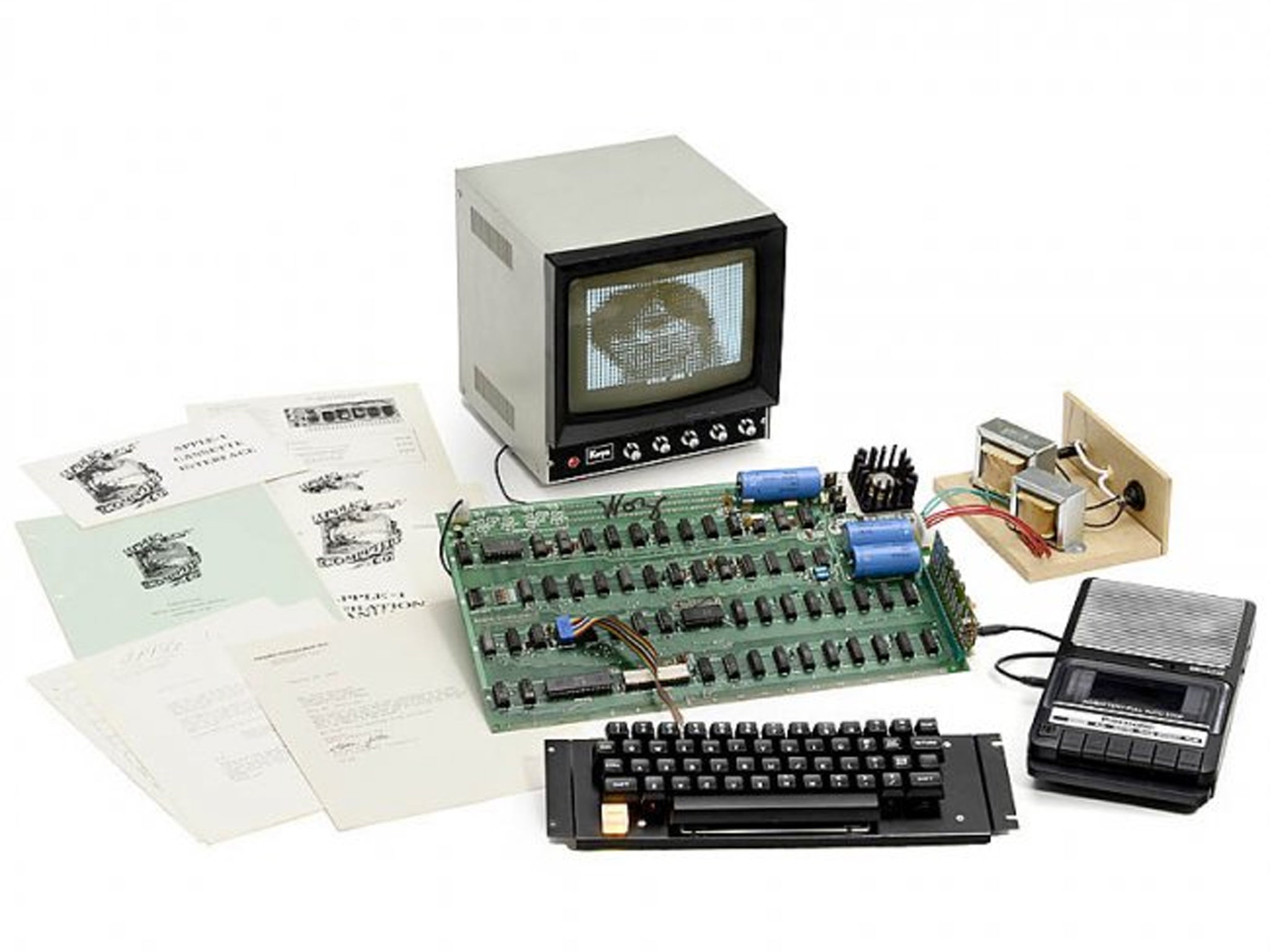Wooden keyboard, no access to app store: the Apple-1, yours for £250,000
The sale of one of the 46 surviving Steve Jobs computers is tipped to break new records

Your support helps us to tell the story
From reproductive rights to climate change to Big Tech, The Independent is on the ground when the story is developing. Whether it's investigating the financials of Elon Musk's pro-Trump PAC or producing our latest documentary, 'The A Word', which shines a light on the American women fighting for reproductive rights, we know how important it is to parse out the facts from the messaging.
At such a critical moment in US history, we need reporters on the ground. Your donation allows us to keep sending journalists to speak to both sides of the story.
The Independent is trusted by Americans across the entire political spectrum. And unlike many other quality news outlets, we choose not to lock Americans out of our reporting and analysis with paywalls. We believe quality journalism should be available to everyone, paid for by those who can afford it.
Your support makes all the difference.The computer is 37 years old, has a keyboard set in wood and it is being offered for sale along with a batch of ancient typewriters and a 1905 toy battleship.
Yet Apple’s pioneering Apple-1 computer could fetch well in excess of £250,000 when it is put up for auction in Germany today.
The Apple -1 caused a sensation last November when one of the 46 examples of the 1976 computer still in existence, was sold for a staggering $640,000 (£420,000) at Cologne’s Breker auction house. The sum surpassed a previous record of $374,000 set at Sotheby’s in New York five months earlier.
Uwe Breker, who runs the German auction house which specialises in vintage toys and office equipment, conservatively estimated yesterday that the latest Apple -1 to be put on the market would fetch anything from $260,000 to $400,000. However he did not rule out the possibility of another record. “We will see,” he said.
Mr Breker did not disclose the seller, only revealing that it was a young American who works for a software company who brought in the computer wrapped in a blanket.
Computer industry experts struggle to explain the growing demand and corresponding astronomical rise in the price of original Apple-1s. They point out that they were fetching around $2,000 at computer fairs in Silicon Valley’s heartland just a decade ago.Earlier this week, The New York Times attributed the cause to the “economics of scarcity and techno-fetishism, magnified by the mystique surrounding Apple – one of the largest and most profitable corporations in the world”.
Computer historians stress that the Apple-1 was a pioneering device which helped computing make the transition from being a nerd’s hobby into the huge commercial enterprise it is today. “It is Apple’s creation story,” said Dag Spicer, the curator of the Computer History Museum in California, “It is the physical artefact that traces this incredible success to its origins.”
The Apple-1 was first shown to the public at California’s Homebrew Computer Club in 1977. An estimated 175 to 200 of the rudimentary computers were produced in the family garage of the late Apple founder and visionary Steve Jobs who died in 2011.
The computer was designed by Stephen G Wozniak, Apple’s hardware-hacking engineer. All that the Apple-1 offered was a computer motherboard and clusters of chips. The device could be used to run primitive computer games and write basic programmes. It had a mere 4 kilobytes of memory compared to today’s MacBook Air which has over 4 million.
Working examples in top condition and with original documentation are the Apple-1’s which have so far fetched the best prices at auction. It is also important that the device has a story. The computer on offer to bidders in Cologne today would appear to fit all the necessary criteria. It was first owned by a major league baseball player called Fred Hatfield.
Mr Breker said the documents included a letter to Mr Hatfield signed by Jobs, offering an Apple II and a $400 cheque for his Apple-1. For some undisclosed reason Mr Hatfield declined.
Join our commenting forum
Join thought-provoking conversations, follow other Independent readers and see their replies
Comments